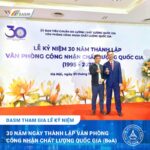5.1 The main part of this standard uses procedures originally developed for laboratory measurements of the sound transmission loss of partitions. These procedures assume that the rooms in which the measurements are performed have a sound field that reasonably approximates a diffuse field. Sound pressure levels in such rooms are reasonably uniform throughout the room and average levels vary inversely with the logarithm of the room sound absorption. Not all rooms will satisfy these conditions. Experience and controlled studies (1)6 have shown that the test method is applicable to smaller spaces normally used for work or living, such as rooms in multi-family dwellings, hotel guest rooms, meeting rooms, and offices with volumes less than 150 cubic meters. The measures appropriate for such spaces are NR, NNR, and ATL. The corresponding single number ratings are NIC, NNIC and ASTC. The ATL and ASTC are measurable between larger spaces that meet a limitation on absorption in the spaces to provide uniform sound distribution.
5.2 Annex A1 was developed for use in spaces that are very large (volume of 150 m3 or greater). Sound pressure levels during testing vary markedly across large rooms so that the degree of isolation varies strongly with distance from the common (separating) partition. This procedure evaluates the isolation observed near the partition. The appropriate measure is NR, and the appropriate single number rating is NIC.
5.3 Several metrics are available for specific uses. Some evaluate the overall sound isolation between spaces including the effect of absorption in the receiving space and some evaluate the performance or apparent performance of the partition being evaluated. The results obtained are applicable only to the specific location tested.
5.3.1 Noise Reduction (NR) and Noise Isolation Class (NIC)—Describe the sound isolation found between two spaces. Noise reduction data are based on the space- and time averaged sound pressure levels meeting the requirements of 11.3 or A1.3 as required depending on the sound absorption, volume, and shape requirements of 9.2. Noise reduction values are influenced by the absorption in the receiving space as well as the apparent performance of the partition. The noise reduction values in unfurnished spaces are typically less than in furnished spaces, and noise reduction values between the spaces depend on the test direction used and the sound absorption in the spaces. However, these effects are lessened when the method of Annex A1 is used.
5.3.2 Normalized Noise Reduction (NNR) and Normalized Noise Isolation Class (NNIC)—Describe the sound isolation between two residential or office spaces meeting the requirements of 9.3.1 adjusted to standardized room conditions typical of such spaces when normally furnished.
5.3.3 Apparent Transmission Loss (ATL) and Apparent Sound Transmission Class (ASTC)—Describe the apparent sound insulation of a partition separating two spaces as influenced by flanking in the supporting structure. All sound transmission, including any flanking transmission, is ascribed to the partition. The apparent transmission loss of the partition will be less than the actual sound transmission loss (Path D in Fig. 1) if flanking (Path F in Fig. 1) is significant (2,3). These results are in theory the same in each direction but differences with direction have been observed in practice. If it is necessary for diagnostic purposes to suppress flanking when doing measurements, the results must be clearly labeled as “flanking suppressed.”
5.4 The primary use of this test method is to evaluate the sound isolation and apparent sound insulation performance in buildings based on tests of unmodified structures. If the measurement methods are used for diagnostic or investigative purposes to measure the performance of modified structures in buildings, results must be clearly labeled to indicate such.
NOTE 4: Versions of this standard prior to 2017 included TL and STC metrics with prefixes designated as “Field (F).” The “Field” version of the metrics was intended to exclude the presence of flanking sound transmission altogether; whereas, the “Apparent” version presumes an (unknown) degree of flanking. In addition, the “Field” version of the metrics required more stringent limits on room volume and room absorption. These earlier versions also included guidance on suppression of flanking, useful for diagnostic purposes.









